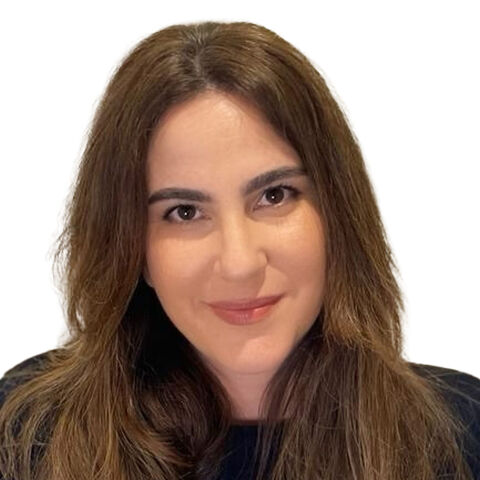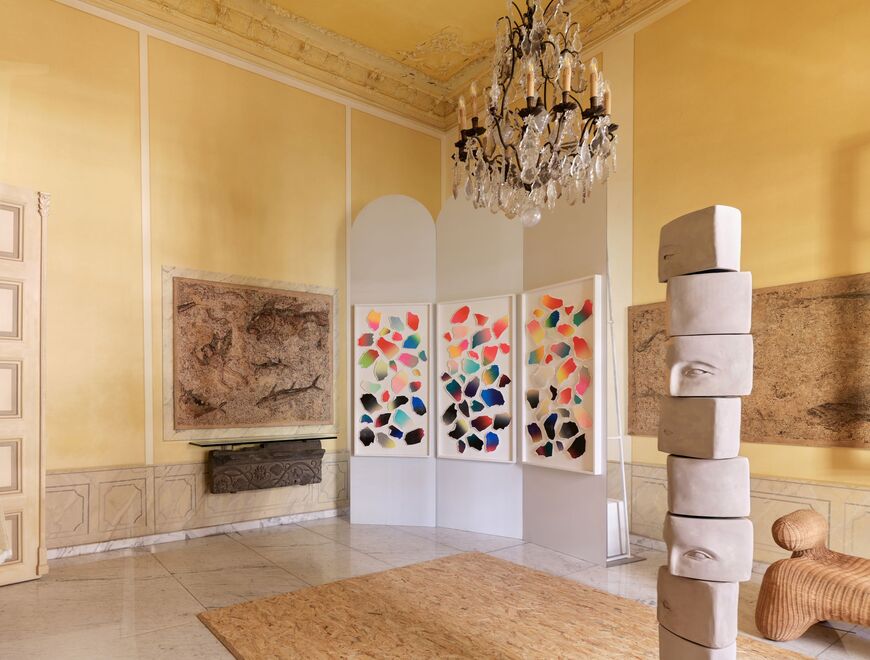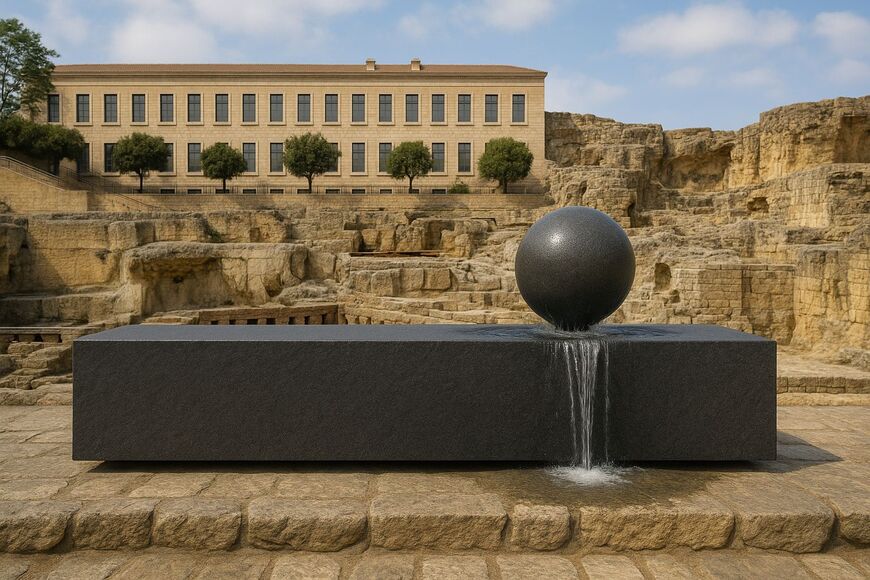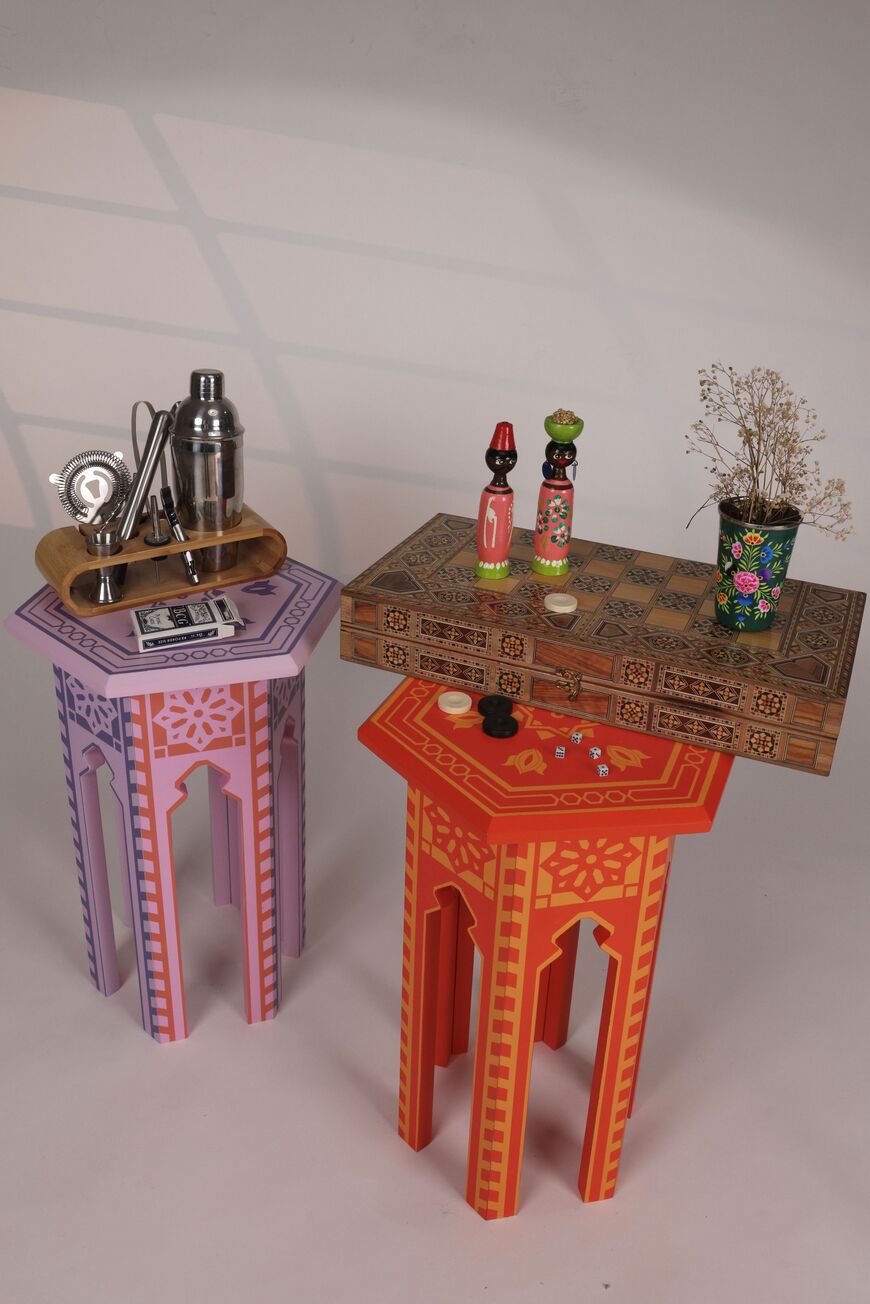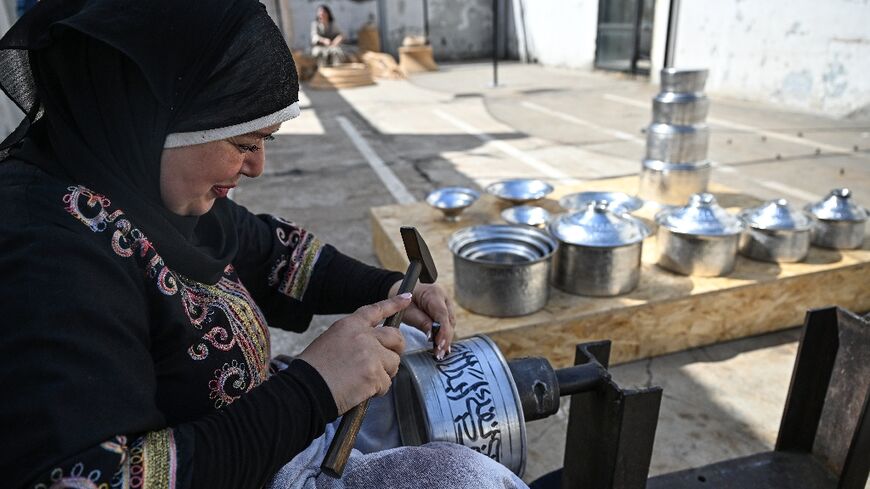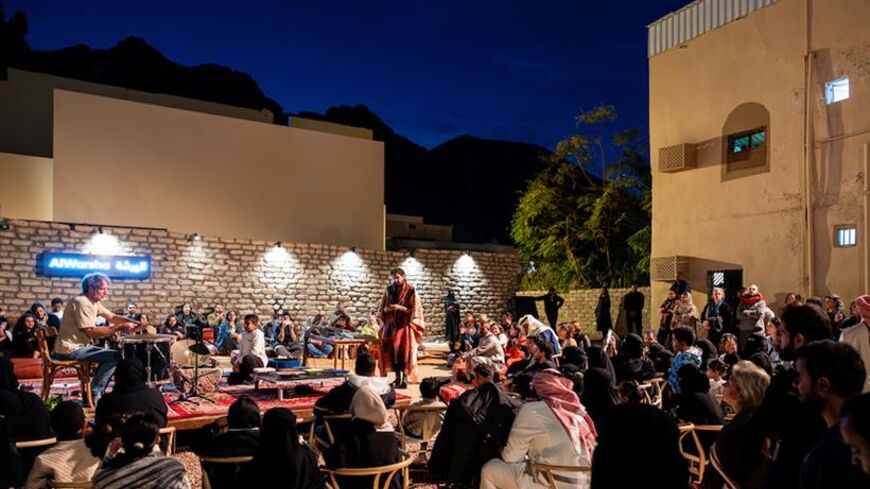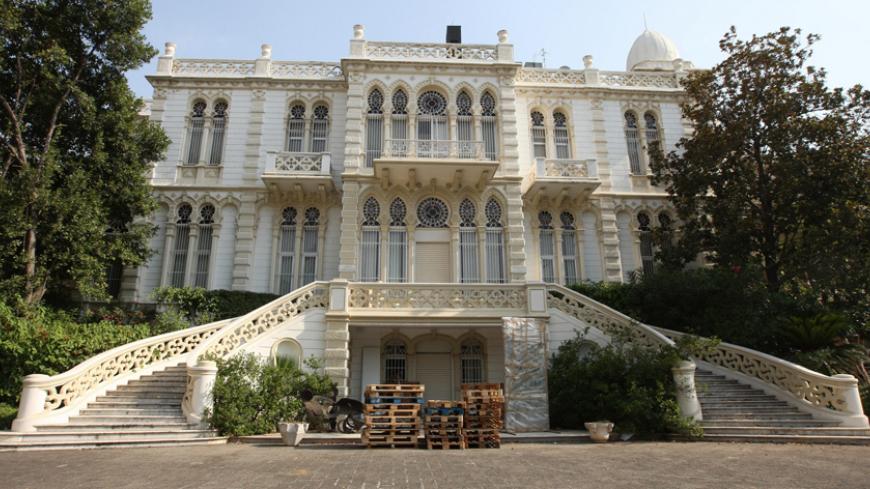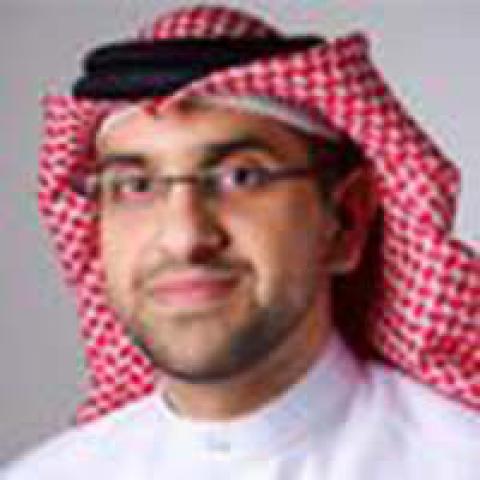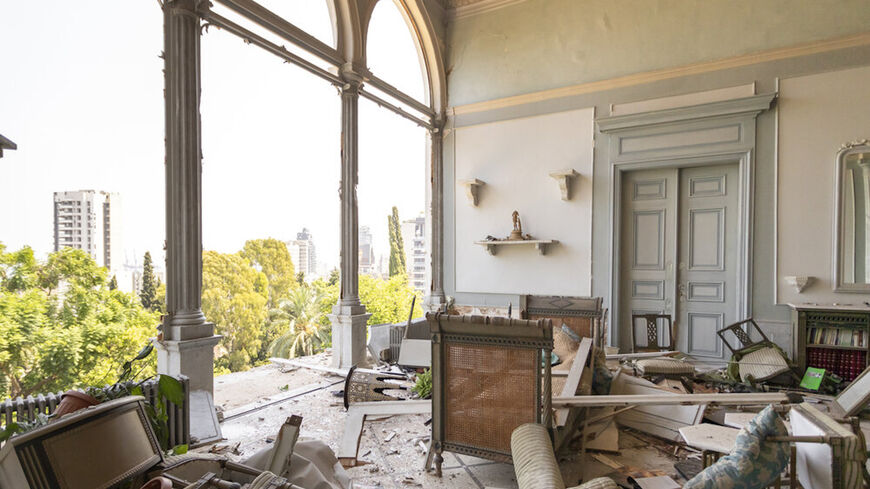We Design Beirut returns, reviving a city through art and architecture
The We Design Beirut event, taking place across several parts of the Lebanese capital and showcasing cultural and architectural legacies, returns for its second edition this year.
BEIRUT — Lebanon is hosting this week the second edition of We Design Beirut, a five-day design event and platform dedicated to showcasing architectural innovation and heritage and highlighting the Lebanese capital’s design scene, which blends tradition and modernity.
The event was inaugurated on Wednesday with a mesmerizing show by Lebanese fashion designer Salim Azzam in the Abroyan Factory, an abandoned textile site built between the 1940s and 1970s in the town of Bourj Hammoud, located on the eastern banks of the Beirut River.
The performance featured 40 women artisans, their heads draped in white veils, sitting in a circle and moving their hands on a long white sheet in rhythm to the sound of needles, threads and scissors, set against the evocative music of singer and composer Lynna Adib.
Azzam is the founder of an eponymous atelier that creates minimalist pieces of clothing and furniture handmade by women from Mount Lebanon using ancient embroidery methods and traditional craftsmanship.
“Together they create a living lullaby, carrying forward songs once hummed by mothers as they embroidered bedsheets for their daughters,” Azzam wrote on Instagram, referring to Wednesday’s performance.
Founded by Mariana Wehbe — the head of PR agency Mariana Wehbe Public Relations — in partnership with industrial designer Samer Alameen in 2024, We Design Beirut returns to the heart of the Lebanese capital from Oct. 22 to Oct. 26.
This year’s edition explores the themes of legacy, revival and continuity, showcasing a renaissance era 50 years after the Lebanese civil war (1975-1990). “The event honors and preserves the country’s monuments, crafts, heritage sites, and musical traditions, ensuring their continued relevance and resonance for future generations,” according to a press release from the event’s organizers sent to Al-Monitor.
Set against the backdrop of some of Beirut’s historic venues, We Design is a citywide immersive design experience that features art exhibitions, installations, pop-ups, open studios and panel talks in the fields of interior design, architecture, furniture, product design, ceramics and others.
The event spotlights local designers, artisans and brands, while also introducing a new generation of emerging designers featured in exhibitions unfolding over the next few days.
This year’s program includes eight exhibitions set up at five locations across Beirut — each selected for their architectural and symbolic significance — four panel talks, showcases, open studios, excursions and workshops, allowing designers, aspiring artists and visitors to connect.
Exploring traditional art through a modern lens
The Abroyan Factory is hosting two exhibitions that explore the unique craftsmanship of artisans and designers. “Threads of Life” brings to light traditional and contemporary textile arts, with the participation of local fashion designers and design collectives showcasing their pieces.
Among the participants in the exhibition is Bokja, a Beirut-based design studio that creates objects and pieces using textiles, embroidery and vintage fabrics.
Maria Hibri, the co-founder of Bokja, a term used in the region that means "a bundle of fabrics," spoke to Al-Monitor about the studio’s installation dubbed “It’s All About Perspective,” saying it aims to push people to see objects from different viewpoints and widen their understanding of them.
“The exhibition is all about perspective and trying to engage people with us to talk about, ‘What if we look at things from a different perspective and review the things that we are indoctrinated with and change our narrative?’” she explained.
The works on display include a tapestry showing a reborn tree that symbolizes life and death, and handwoven pieces depicting voodoo dolls as symbols of empowerment instead of fear.
“It’s All About Perspective” installation by Bokja at Threads of Life exhibition in Abroyan Factory, photo by Bernard Khalil. (Credit: Mariana Wehbe Public Relations)
“Also it [the installation] has to do with the 50 years of civil war and how we can never agree on one perspective and now maybe we should accept everybody’s perspective,” Hibri added, referring to the different narratives related to the civil war that persist to this day, often creating tensions among the Lebanese population.
Another collective showcasing its pieces at "Threads of Life" is Inaash, a nonprofit Lebanese association that works with Palestinian women from refugee camps. The installation, called “A Nation in Stitches,” featured six different thobes, the traditional Palestinian dress, set up on tent-like canvases to evoke the refugee status of the Palestinian women behind them.
Ali Jaafar, general manager of Inaash, told Al-Monitor, “We wanted to portray the beautiful work of refugee women who [despite] all the hardships that they find, they still can do this amazing work.”
“There are six different panels with six different thobes, or dresses, from six different cities of Palestine. They stand out differently because every city has its own motif,” he added. “Each piece took around eight months [to be completed], and it was done by one lady from different camps all over Lebanon.”
“A Nation in Stitches,” installation by Lebanese Inaash association at the “Threads of Life” exhibition at Abroyan Factory, photo by Bernard Khalil. (Credit: Mariana Wehbe Public Relations)
The “Metiers d'Art” exhibition at Abroyan Factory is bringing together modern designers and traditional artisans to create contemporary products using traditional methods such as glass blowing, clay making, rattan weaving and marquetry.
A third exhibition, titled “Skin of a City,” is also happening at Abroyan Factory and features photographs taken by Patrick Baz, a former war photographer, and Anthony Saroufim, a young architect and photographer, who explore the themes of transformation and healing using the human body as a canvas. Through their lens, the photographs reflect a contemporary image of Lebanon while capturing its evolving identity.
We Design Beirut also features the “Totems of the Present and the Absence” exhibition, held at the historic Villa Audi in Beirut. Curated by Gregory Gatserelia, a Gregorian interior architect and founder of SMO Gallery in Beirut, the exhibition includes design works created by emerging and established designers from Lebanon and the world that blend memory, present and legacy.
“Much Peace, Love and Joy,” an immersive installation by the Japanese creative unit SPREAD, at Villa Audi Mosaic Museum. Photo by Dia Mrad. (Credit: Mariana Wehbe Public Relations)
Selecting Villa Audi as the venue underscores the exhibition’s concept of blending past and present, as the iconic house stands as a rare example of Beirut’s architecture fusing Ottoman influences with European elements. The villa was built between 1918 and 1921 by Jacques Karam for his wife Lyda Sursock, a member of a prominent Lebanese family. In 1973, the villa was bought by Bank Audi and served as the bank’s headquarters during the civil war. It was turned into a museum years later, housing unique collections of private mosaics and antiquities.
The Roman Baths, an archeological site dating back to the first century AD, nestled in the heart of Beirut, is hosting the “Of Water and Stone” exhibition, showcasing large-scale marble pieces by local and international designers that will complement the historic baths, which offer a glimpse into the architectural engineering brilliance of the Roman Empire. The exhibition is meant to highlight the Roman mastery of marble and its influence in contemporary design.
“Whispers of Stone and Water” conceived by Lebanese architect and designer Samer Bou Rjeily and exhibited at the “Of Water and Stone” exhibition, in the Roman Baths of Beirut. (Credit: Mariana Wehbe Public Relations)
Emerging talents at We Design
We Design Beirut is spotlighting another one of Beirut’s landmarks, Immeuble de l'Union, where two exhibitions are running during the event.
The building, located in the Sanayeh neighborhood of Beirut, was built in 1952 and is currently being renovated by architect Karim Nader after it was abandoned for decades. Immeuble de l'Union is a symbol of modernity, embodying Beirut’s urban evolution.
Set within the walls of Immeuble de l'Union, the “Rising with Purpose” exhibition will present the works of emerging talents under 30 created under the discerning eye of designers Karel Kargodorian, Marc-Antoine Frahi and Miriam Abi Tarabay. These pieces offer a new take on the Lebanese design scene by inviting a new generation of designers to go beyond aesthetics and create pieces that meet real societal, cultural and environmental needs.
“It reflects a shared desire among emerging designers to create work that carries meaning not just in how it looks or how it’s made, but in how it functions, what it solves, or who it serves,” explained a statement from the curators, which Al-Monitor obtained a copy of.
Zein Hageali, a Lebanese product and industrial designer, is among the dozens of young artists participating in "Rising with Purpose." She is showcasing her product “Tawlitna” (Arabic for “Our Table”), a traditional Syrian table with six legs assembled using interlocking joints instead of screws or glue to allow users to easily disassemble and store the table. The design blends tradition with modern sustainability.
“We Design Beirut offers a rare opportunity for Lebanese designers like myself to return, reconnect and take part in shaping the design culture of our homeland. It brings together a community that may be scattered, but deeply rooted. To create, collaborate and exhibit in Lebanon is not just a professional milestone — it’s a meaningful way to feel close to home again,” she said in a statement provided to Al-Monitor by the organizers.
Shots of “Tawlitna” a product created by Lebanese product and industrial designer Zein Hageali, for the “Rising with Purpose” exhibition at Immeuble de l’Union. (Credit: Mariana Wehbe Public Relations)
For the exhibition, Alexandre Abdelnour, a 24-year-old Lebanese designer and founder of Studio Hic, a multidisciplinary design studio, created the "Don’t Play with Your Food" kit, which includes several playful tableware add-ons that invite people to have fun while eating around a table, turning it into a space for interaction instead of a simple piece of furniture used for consumption.
“I believe design can actually make the world better — not just prettier. It’s my duty to share that belief through my work. We Design Beirut is an opportunity to challenge conventions, share what I stand for, and create something truly meaningful,” he said in a statement provided to We Design Beirut.
Alongside the exhibitions and other events, visitors will also have the opportunity to discover some of Beirut’s overlooked architectural landmarks that stand as a testament of the city’s glory days.
Omar Harb, Lebanese architect and founder of Modern Architecture from Lebanon, a group that aims to promote and preserve Lebanon's modernist architectural heritage, will be leading the guided tour, scheduled for Saturday, taking visitors to 49 buildings and coastal monuments that blend international design with Lebanese identity, including iconic sites such as The Egg and La Gondole building.
